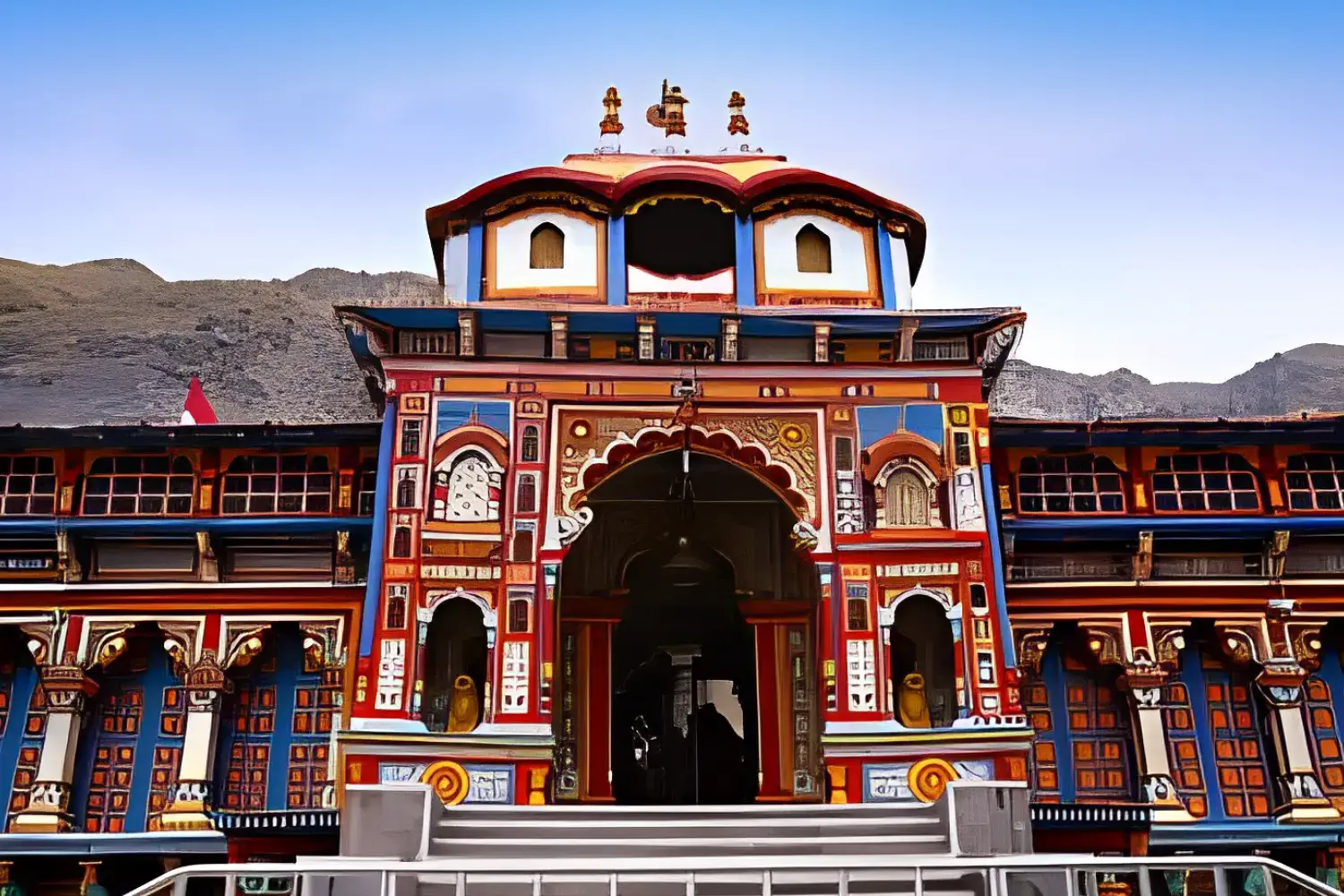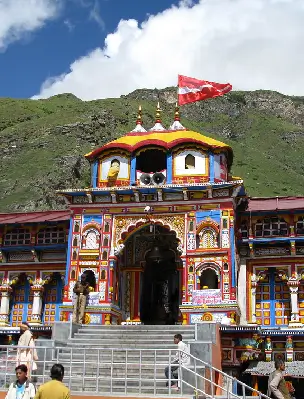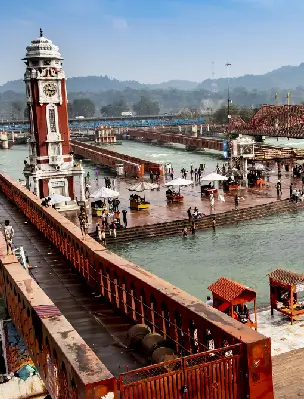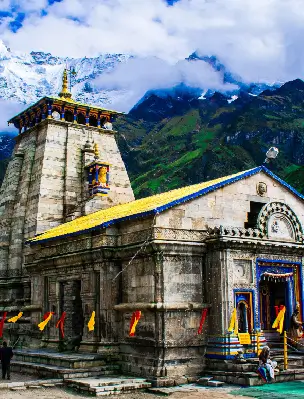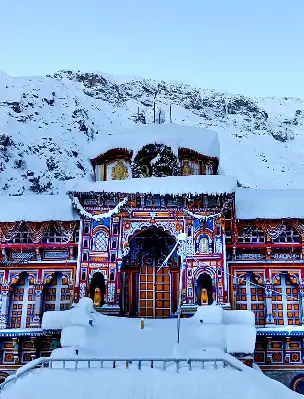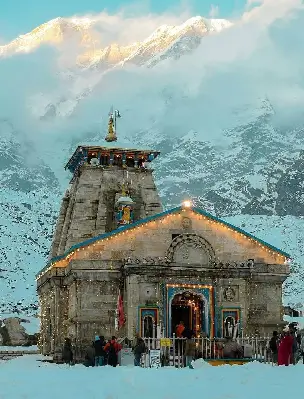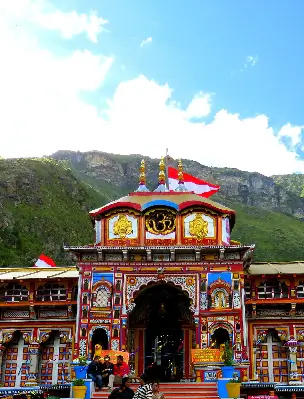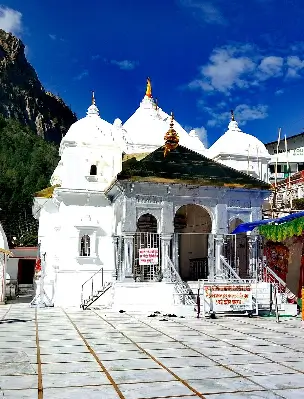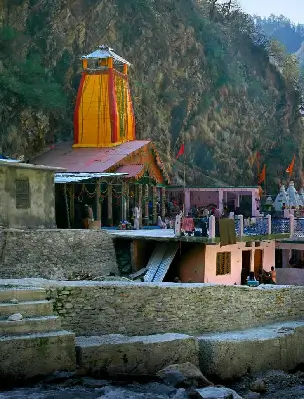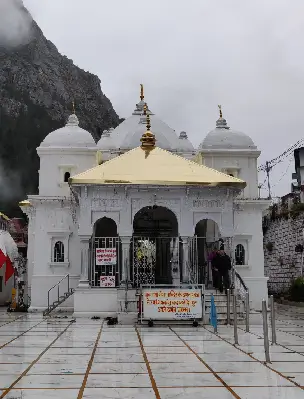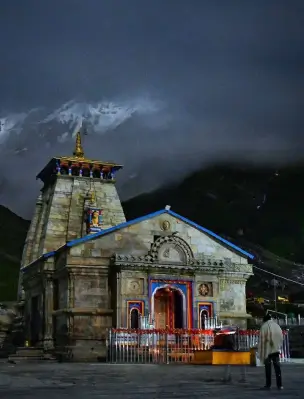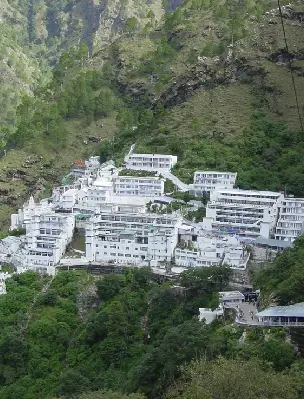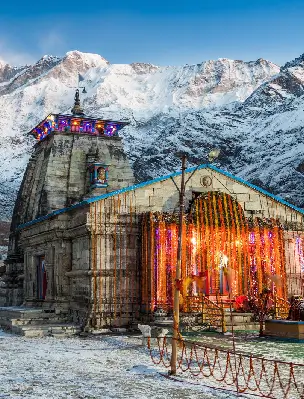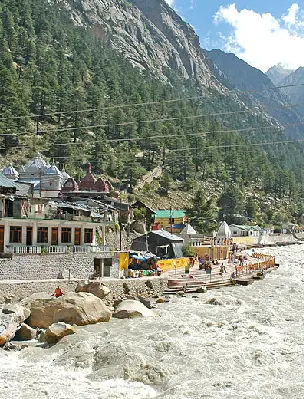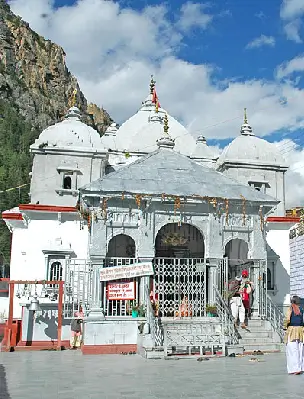History of Shri Badrinath Temple
Let's explore the deep insights into the history of Shri Badrinath Dham Temple, located in the Himalayas, one of the four main destinations of the Char Dham Yatra, established by Adi Guru Shankaracharya.
Nestled in the Chamoli District of Uttarakhand, the spectacular Badrinath Temple, also known as Badrinarayan Temple or Badri Vishal Chardham Temple, is situated amid the Himalayas. The natural beauty of the holy site welcomes the many tourists from across India, which remains open for the pilgrim from May to November. Badrinath Dham situated in the Garhwal hills and surrounded by the snap-capped Himalayas and the Alakananda River, this highly respected Chardham pilgrimage destination bears a significant meaning for Hindus. This town has a long history and is shaded by Nilkantha Peak, nestled between the Nar and Narayan mountain ranges. It is believed that Adi Shankryachakra established this pilgrimage site in the ninth century.
Badrinath Temple is one of the 108 Divyadesam (holy sites) for Vishnu followers. It is believed to be dedicated to Lord Vishnu and together with 3 other reserved sites, it forms Hinduism’s holiest Chardhams.
Badrinath temple is the home to a one-meter-tall black stone idol of Lord Vishnu which is believed to be one of the eight Swayam Vyakta Kshetra. The Lord Vishnu shrine increases the grandeur of the temple with a magnificent entrance painted in vibrant hues. Furthermore, this temple has a Tapta Kund, which is popular for its curative powers. Visitors should schedule their visit during June and September to attend the Badri Kedar festival and the Mata Murti ka Mela.
Legends and Mythology of Shri Badrinath Temple in the Himalayas
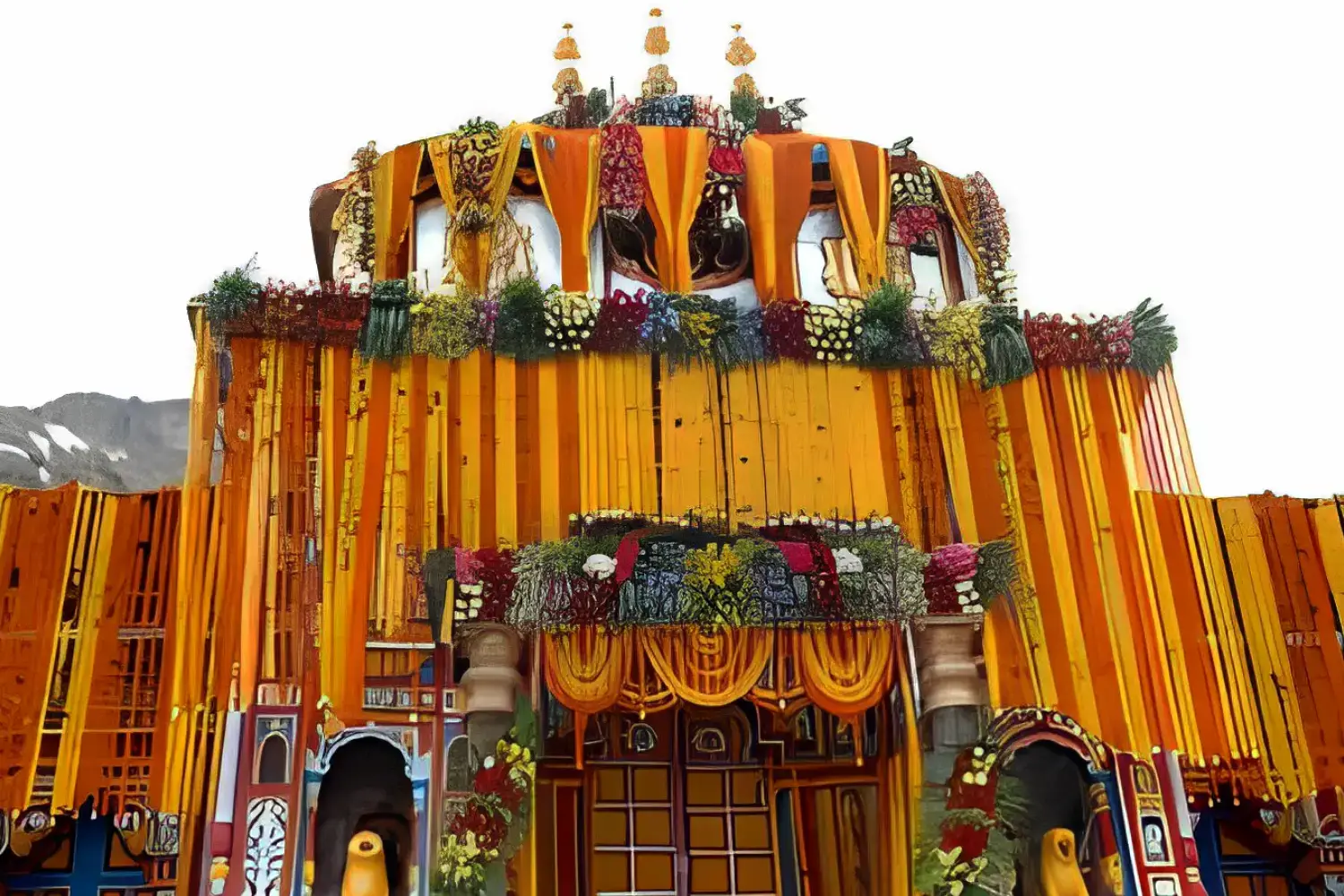
The ancient history of Badrinath Temple is surrounded by a variety of interesting stories. It is believed that Lord Vishnu spent thousands of years performing meditation for the adobe and appeared in the form of Lord Badrinath to bless his devotees. Goddess Laxmi also appeared in the form of a Berry (badri) tree to protect Lord Vishnu from the extreme weather conditions. Badri Dham also known as Badrikashram to see this Goddess Laxmi's devotion.
Historical accounts suggest the temple existed since 500 BCE and the other ancient story tells, according to Hindu mythology Lord Shiva holds an important place in this Badrinath Dham, it is believed that present in the form of a natural hot spring, known as Tapta Kund this is the form of Lord Shiva, pilgrims are come and dip into the kund.
According to the different Mythology, Badrinath temple was a stop on the Pandava's journey to the afterlife in the Epic Mahabharata. The foundation of the present temple is also believed to have been laid by the prominent Philosopher Adi Shankaracharya find the black-stone image of Lord Badrinarayan in the Alaknanda river and established in the cave near the Tapta Kund (which is associated with the Lord Shiva).
A Historical Tapestry of Shri Badrinath Dham Temple: Unraveling the Past

The development of architecture and spiritual devotion weave together to create the history of Badrinath temple. The temple’s exact origins are unknown but it is believed that it has been a site of worship for more than 1000 years. Shri Badrinath temple has a long history going back to the Vedic Era. It appears in Puranic literature.
However, the present form of Kedarnath temple is a restructured avatar, built in the 8th century by an Indian vedic teacher and philosopher, Adi Shankaracharya. Adi Shakaracharya is also known for reviving and establishing many other Hindu pilgrimage sites including the four main shrines of Hinduism - the Char Dhams.
An important part of the temple’s revival in the 9th century CE was played by Adi Shankaracharya. It is believed that he rebuilt the shrine and wrote the current history of Badrinath Temple. Badrinath Dham has seen multiple restorations over the ages, mostly at that time when the Garwhal kings were in power. In the 17th century, the king of Garhwal moved the murti to the present temple. The temple’s repair and upkeep have been financed in part by later kings and followers, ensuring its standing as a major destination for the Badrinath Chardham Yatra.
Architecture of Shri Badrinath Temple
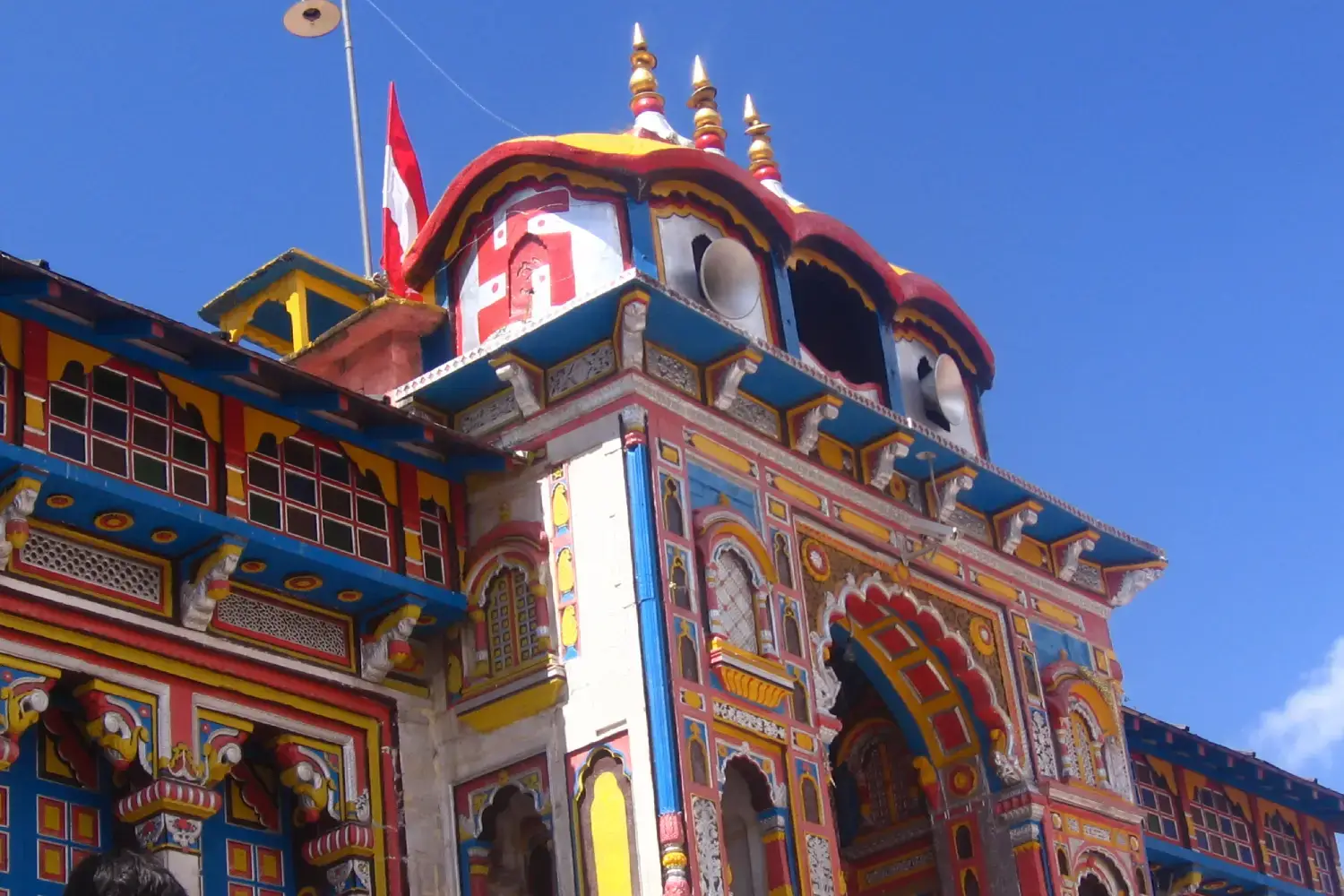
Shri Badrinath temple is reflective of the traditional Garhwali style, identified by stone and wood construction. The intricately carved front, arched windows, and conical-shaped sanctum showcase the architectural finishing of that time. At a height of over 3,300 meters, the temple has a unique front that is painted in vibrant colors and images of Buddhist Viharas which is not unforgettable. The grandeur is amplified by its position in the Himalayas, where the Badrinath Temple stands with snow-capped peaks providing an unforgettable backdrop.
The main entrance of Badrinath temple is known as Singhdwar, it is a striking and vibrant sight. The temple has a small cupola on top and stands about 50 feet tall. The roof is decorated with gold gilt. The Badrinath temple is divided into 3 parts ‘Garbha Griha’, ‘Darshan Mandap’, and Sabha Mandap. At the Badrinath Temple gate, the idol of the bird guard, Lord Badrinarayan’s vehicle is seated, in prayer with his hands folded.
Interesting Facts About Badrinath Temple

The mystique and attraction of Badrinath Temple are enhanced by an abundance of interesting facts. The temples remain closed for six months every year due to the harsh winter weather. To ensure continuous worship, the idol of Lord Badrinarayan is shifted from Joshimath’s Narasimha Temple during this harsh winter season. Furthermore, the temple has a naturally developing hot spring called Tapta Kund, where pilgrims dip in the kund before visiting the shrine. It is believed that this custom is devoted to worship as a purification.
In the 17th century, the Garwhal king took over the administration and the expansion of the Badrinath Temple. However, the temple suffered extensively because of the Earthquake in the Himalayas in 1803. It was eventually reconstructed by the Jaipur King and it was finished before the start of World War First.
The British took control of the Badrinath temple in the 19th century after Garwhal was split into two sections. However, the Garhwal King remained in charge of the temple’s Administrative council.

The tales of mythology, architecture, and devotion are all interwoven throughout the history of Badrinath Temple. Badrinath Dham is a vital part of Uttarakhand’s Chardham and has been preserved through centuries of religious importance and historical developments. The long history of the Shri Badrinath Temple describes how it was first used as a place of worship over a thousand years ago, with contributors from several followers and kings, including the Jaipur king who reconstructed the Temple after the earthquake. Shri Badrinath Temple is an essential stop during the Badrinath Dham Yatra, due to its amazing architecture, which includes intricate designs and a bright facade.
The temple’s beauty is further enhanced by mythology and legends, which increase its mystique with tales of Lord Vishnu’s meditation and the Pandavas' journey. Fascinating details that add to the temple’s unique attractiveness include the idol’s seasonal relocation and the Tapta Kund healing qualities. The Badrinath temple, is still an illumination of spiritual significance, bringing pilgrims from all over the world to witness its tranquil beauty and rich history.
You Might Also Like to Read
- The History of Kumbh Mela
- Chardham Yatra Offline Registration
- Tungnath Temple Opening & Closing Dates
- 12 Jyotirlinga Temples in India
- Madmaheshwar Temple Opening & Closing
- Badrinath & Hemkund Sahib Helicopter Yatra Services
- Kedarnath Yatra Helicopter Booking Guide
- Online/Offline Registration information for Chardham Yatra
- Char Dham Yatra by Helicopter
- Top Things to Carry with Chardham Yatra
- Best Places to Visit in Uttarakhand
- Best Places to Stay in Badrinath
- Best Places to Stay in Kedarnath
- Rudranath Temple Opening & Closing
- Online Puja Booking at Badrinath & Kedarnath Temple
- Places to Visit Near Badrinath Dham
- Akshaya Tritiya Festival Information
- Best Places to Explore Enroute Kedarnath Dham Yatra
- Ranikhet Tourism- Top Places to Explore & Things to Do
- Kalimath Temple Information
- History of Shri Kedarnath Temple
- Badrinath Temple History
- Gangotri Temple History
Popular Tours
Book The Tour
Char Dham Temples
Hotels in Chardham Circuit
Char Dham Tour Packages
- Char Dham Yatra From Delhi
- Chardham Yatra From Mumbai
- Char Dham Yatra From Ahmedabad
- Chardham Tour with Hemkund Sahib
- Chardham Yatra by Helicopter
- Char Dham Yatra with Vaishno Devi & Amritsar
- Chardham Tour with Gomukh Trek
- Char Dham Packages From Bangalore
- Chardham Yatra From Chandigarh
- Char Dham Yatra with Auli
- Char Dham Yatra From Hyderabad
- Char Dham Yatra with Vaishno Devi, Jwalaji & Amritsar
- Char Dham Yatra From Chennai
- Chardham Packages From Bhopal
- Char Dham Yatra by Luxury Vehicle
- Char Dham Yatra with Satopanth Lake
- Char Dham Yatra with Panch Badri Tour
- Char Dham with Valley of Flowers
- Chardham Yatra with Mahavatar Baba and Nainital Tour
Do Dham Yatra
- Badrinath Kedarnath Yatra From Haridwar
- Badrinath Kedarnath Yatra
- Gangotri Yamunotri Yatra
- Gangotri Yamunotri Yatra from Haridwar
- Kedarnath Badrinath Yatra with Hemkund Sahib
- Kedarnath Badrinath Yatra with Valley of Flowers
- Kedarnath, Badrinathdham With Lake Of Nainital
- Yamunotri, Gangotri with Lake of Nainital
Ek Dham Yatra
- Badrinath Pilgrimage Tour
- Kedarnath Pilgrimage Tour
- Gangotri Pilgrimage Tour
- Yamunotri Pilgrimage Tour
- Kedarnath Yatra By Helicopter
- Badrinath Dham Yatra from Haridwar
- Badrinath Yatra with Hemkund Sahib
- Badrinath Yatra with Valley of Flowers
- Gangotri Dham Yatra with Gaumukh
- Kedarnath Dham Vasuki Tal Trek
